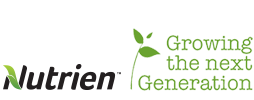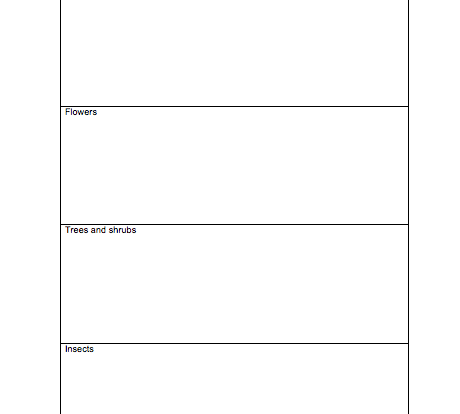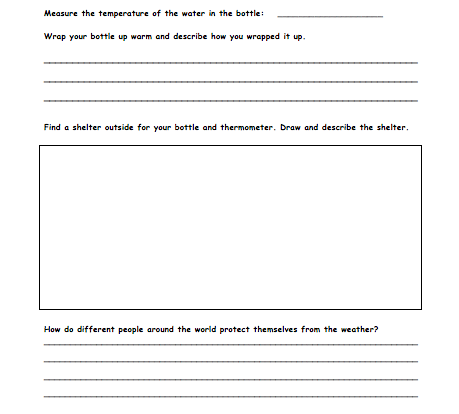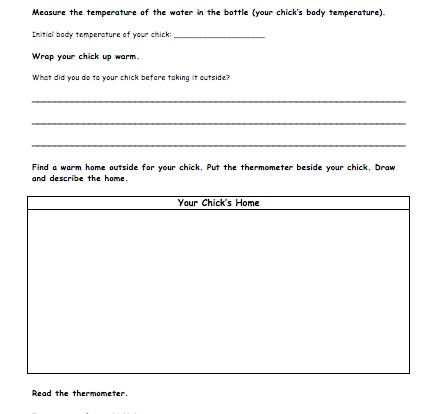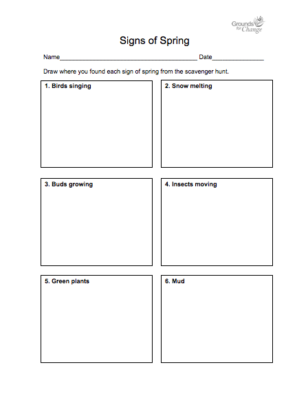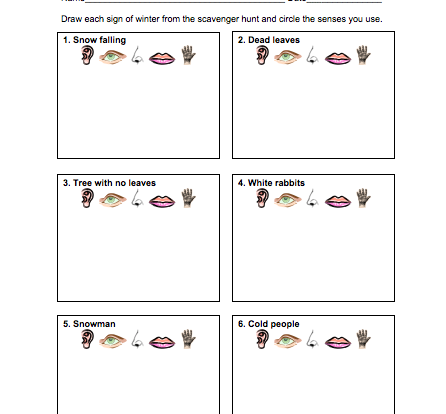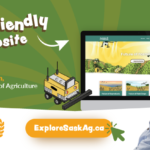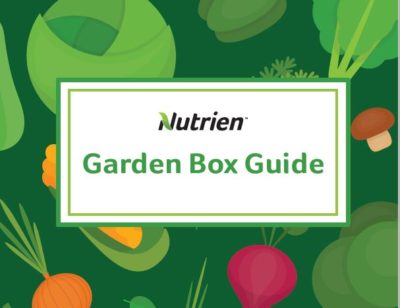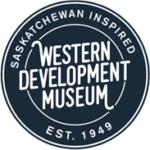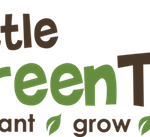-
Students discuss different shapes that that occur in nature. This activity can be completed by having students draw, describe or explore the schoolyard to find the answers. Wrap up: discuss students’ answers and why certain shapes may benefit the organism/plant.
-
Discuss insulation and natural insulating materials/behaviours (feathers, fur, fat/blubber, huddling, homes, etc.). In pairs students receive a water bottle. Fill with warm water, measure temperature and insulate the bottle (wrap in paper, newspaper, cloth, etc.). Each student pair places their bottle outside in a chosen shelter, and records the temperature of the shelter and water inside bottle. Wrap-up: best insulating materials.
-
Discuss insulation and natural insulating materials/behaviours (feathers, fur, fat/blubber, huddling, homes, etc.). In pairs students receive a water bottle (representing a chick). Fill with warm water, measure temperature and insulate the bottle (wrap in paper, newspaper, cloth, etc.). Each student pair places their “chick” outside in a chosen spot or “chick home”, and records the temperature of the home/chick’s body (water inside bottle). Wrap-up: best insulating materials. Pre-experiment idea: Get crafty and have the groups to make their water bottles look like chicks (ie: feathers, googly eyes, etc.) before conducting the experiment.
-
Discuss seasons and senses. Worksheet optional – Explain worksheet symbols. Students find and draw signs and circle the sense they used. Wrap-up: location of signs, sense most used, predict summer signs.
-
Discuss seasons and senses. Explain worksheet symbols. Students find and draw signs and circle the sense they used. Wrap-up: location of signs, sense most used, predict spring signs.
